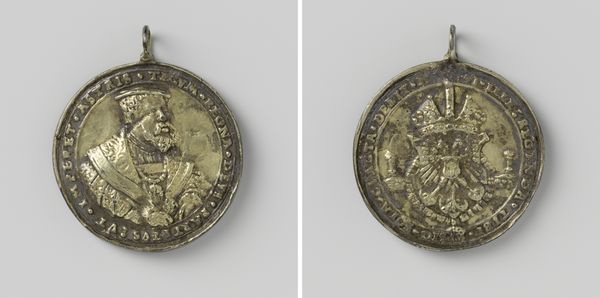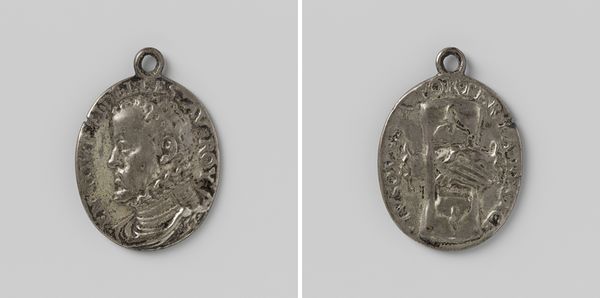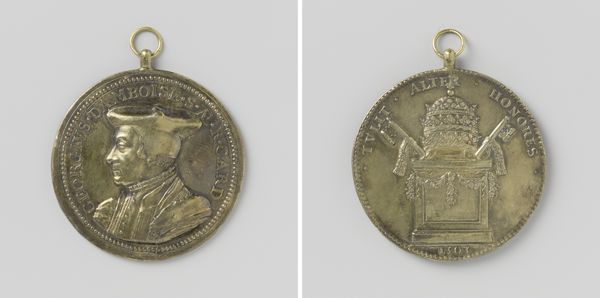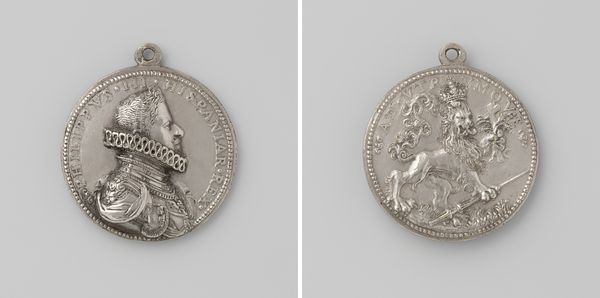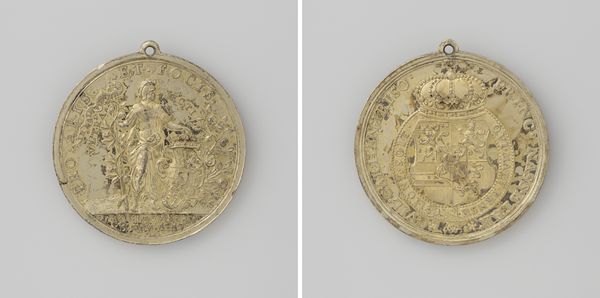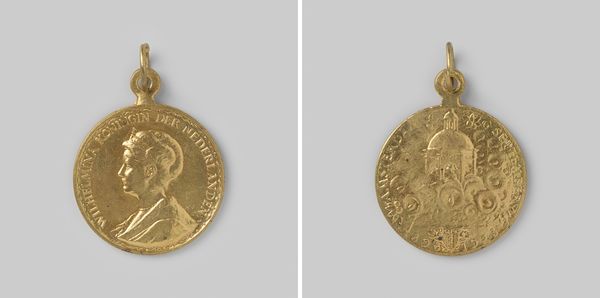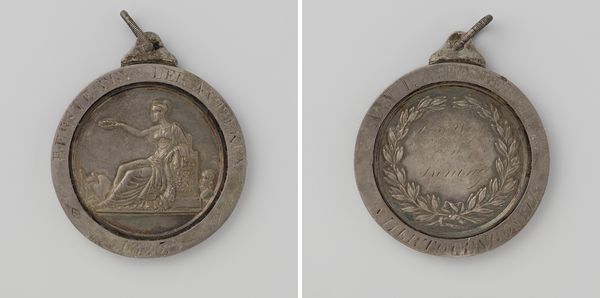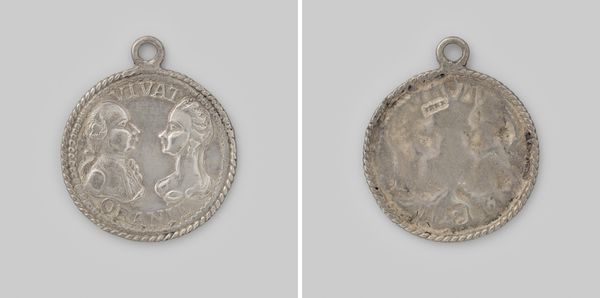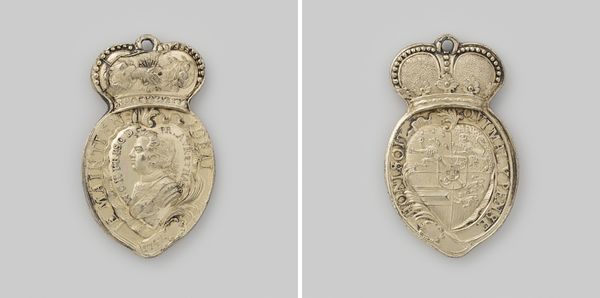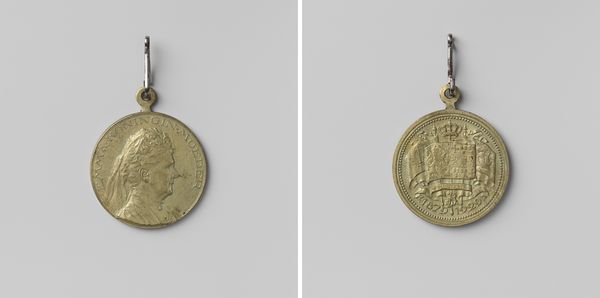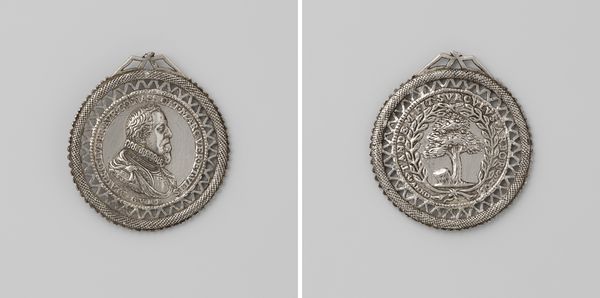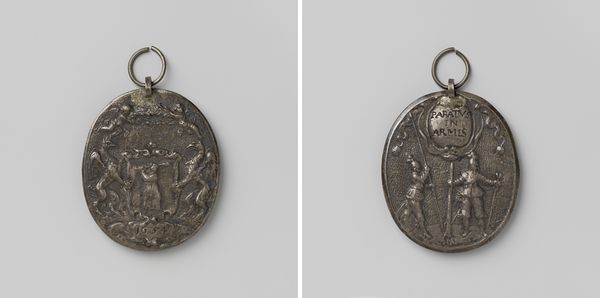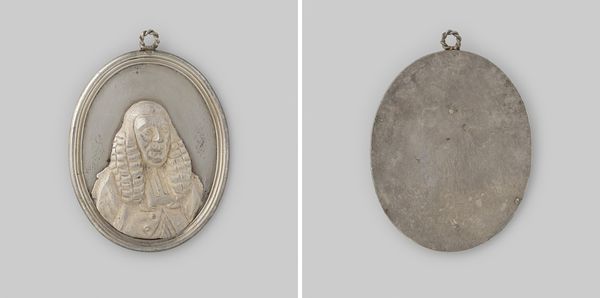
Huwelijk van Willem V met Wilhelmina Frederica Sophia van Pruisen te Berlijn, penning aangeboden aan de schutters van Amsterdam tijdens een vergadering in de Doelen en aan de brandmeesters van 's-Gravenhage 1767
0:00
0:00
Dimensions: height 5.2 cm, diameter 3.7 cm, weight 25.93 gr
Copyright: Rijks Museum: Open Domain
Editor: This ornate metal piece commemorates the wedding of Willem V and Wilhelmina Frederica Sophia of Prussia in 1767. It was presented to the Amsterdam militia and The Hague fire chiefs. The relief almost seems too grand for the object itself. How do you see the function of materiality informing its social role? Curator: I see this medallion not merely as an aesthetic object but as a product of material processes intrinsically linked to social power. The choice of metal, the engraving technique—these weren’t neutral decisions. They speak to the networks of production and distribution that supported and legitimized the ruling class. Editor: So, the metal itself and the engraving, more than the images they depict, reflect power dynamics? Curator: Precisely. Consider the labor involved in mining, refining, and shaping the metal. Skilled artisans, of course, were employed to engrave these miniature portraits. But what were their working conditions? Who controlled access to the raw materials? These questions reposition the object within a larger economic and social web. Editor: It’s like the medallion is evidence of 18th-century trade and production… Curator: Absolutely. This piece enters a cycle of patronage. Its material value, the skill needed for its crafting, underscores a certain status and the social hierarchy within the militia and the fire chiefs, those capable of commissioning, acquiring, and then displaying the artifact. Consider, too, what it meant to produce and circulate multiple versions of this object. Was it intended as propaganda? Editor: I never considered medals this way; seeing them less as artworks and more as records of manufacture, distribution, and power relationships makes history so much more immediate. Curator: Indeed. By interrogating the materials and their production, we unravel the intricate connections between art, labor, and societal structures.
Comments
No comments
Be the first to comment and join the conversation on the ultimate creative platform.
